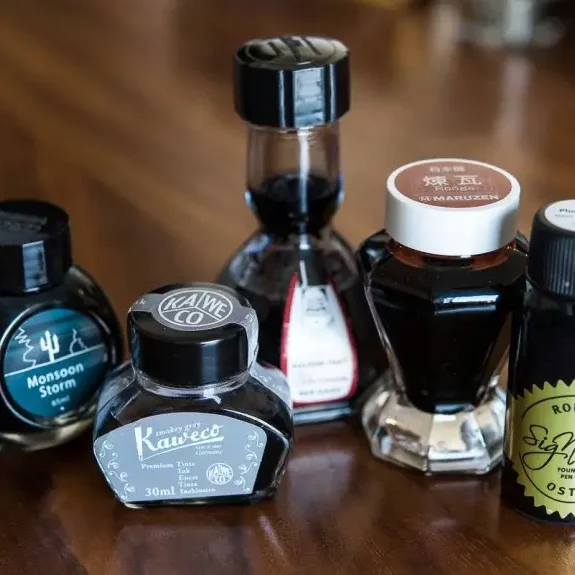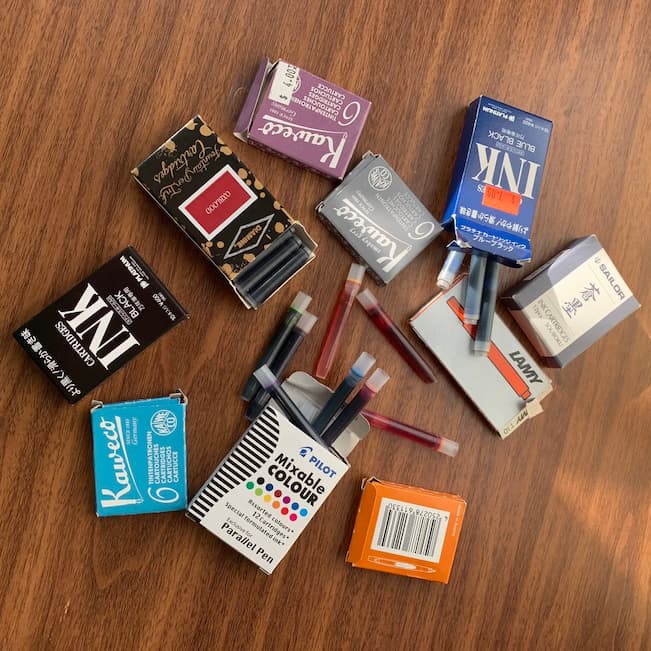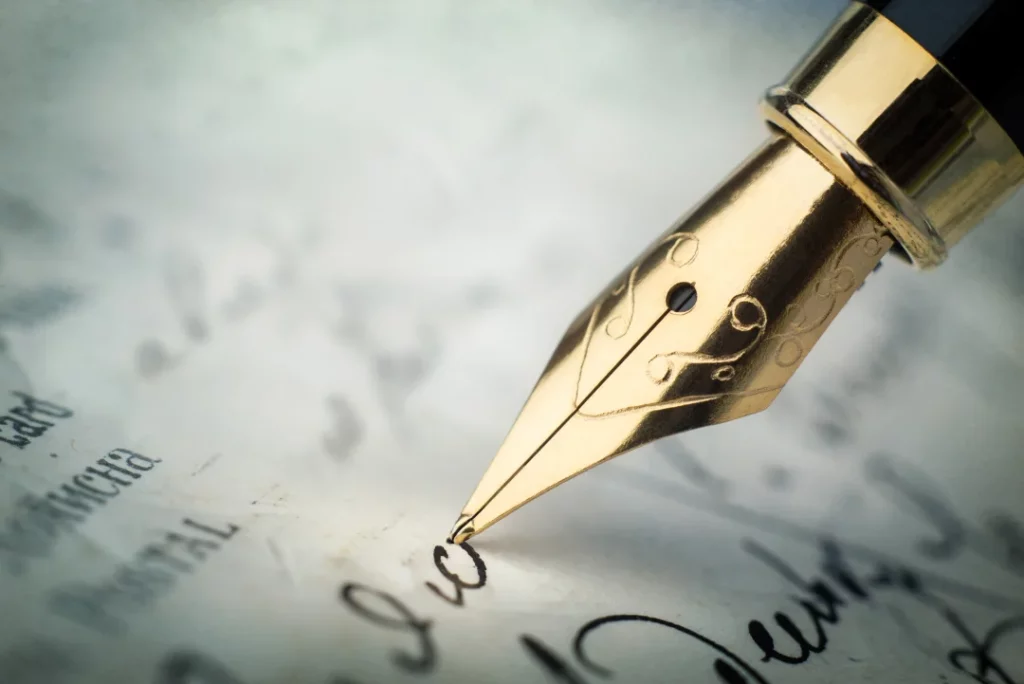If you seek ways to improve your handwriting and wish to write for longer periods while reducing hand fatigue and cramping, a fountain pen is all you need! However, there’s a lot more to fountain pens than people think and getting the right ink for the job is one of them.
Not only do fountain pen inks come in a stunning variety of colours, they also have many other properties you can take advantage of to tweak how your pen feels and writes. But what type of ink is best for fountain pens and how do you know if your ink is good? The following guidelines might give you the answers before making a purchase.
Bottled Ink or Cartridges


The first choice you have to make is whether to use bottled ink or ink cartridges. Filling in your favourite fountain pen with premium quality ink bottles will add depth and make your cards and letters extra vibrant. This makes them one of the most thoughtful gifts for someone who loves to write no matter the occasion.
Perfect for experienced users and adventurous newcomers who don’t want to be constrained by a small colour palette, an ink bottle expands the way you can use your fountain pens, and lets you get even more from their unique writing experience.
They provide specific alternatives like waterproof and fraud-resistant inks, something you’re unlikely to discover among cartridges, and they have an order of magnitude more colour selections than cartridges. There are options with multiple shades, inks with metallic sparkles, watery or heavier inks, and inks that change colour as you write.
You no longer need to be concerned about running out of ink cartridges, which is another fantastic benefit of using bottles of ink. They are sold in 30–50 ml bottles, which can hold up to 100 refills. This makes it much less likely that you will be left holding a pen that has just run out of ink. Imagine all the plastic you just avoided using!
Affordability is yet another advantage when utilizing the bottled option. Even the priciest luxury inks will cost less in the long run if you utilize them all. However, the primary drawbacks of bottled ink are that it takes a little longer, but not much longer, to fill your pen and that bottles are difficult to transport when you want to take your pen on a trip or for business.
Using cartridges, on the other hand, is straightforward and uncomplicated. You insert one, write on it till the ink runs out, then remove it and insert a new one. This is especially useful if you use your pen while travelling. Cartridges’ major drawback is that they just don’t have as many colour options as a bottle of ink even if your pen takes standard international cartridges.
Colour
Spend some time simply perusing the colour swatches of various ink bottles until you discover one or twelve that appeal to you. After all, if you enjoy the ink’s colour sufficiently, you won’t likely care too much if it contains a few oddities. Similarly, consider how much would you enjoy using ink if it has all the qualities you need but the colour you prefer?
Waterproofness
When referring to fountain pen inks, the term “waterproof” is frequently a bit misleading. Completely waterproof inks can smear if they aren’t applied under the proper circumstances. Use a technical drawing pen if you require complete water resistance in your writing or drawings.
There are several inks available, however, if all you want to do is make sure your notes are legible even if they get a bit damp. Many fountain pen inks are at least moderately water resistant, which means that while much of what you wrote would smear if they get wet, you can still read it.
Paper Quality

Although not strictly an ink characteristic, paper quality has a significant influence on the ink you choose! You may use just about whatever ink you choose with no issues if you plan to write on your paper and are willing to purchase appropriate fountain pen-friendly paper or notebooks.
On the other hand, you’ll want to stay with exceptionally well-behaved ink if you’ll be writing on arbitrary prints and other paper that you don’t get to choose to reduce issues like feathering and bleed-through.
Composition
Water and colouring agents are used to create fountain pen ink. These colourants exist in a variety of forms, and each has distinct qualities to take into account when selecting an ink. The most popular and beginner-friendly inks are dye-based ones. They have the widest colour range and typically offer the brightest hues.
Pigment-based inks, on the other hand, offer significantly better persistence at the cost of less colour variation and more frequent upkeep. Pigments are made of big, insoluble particles that become embedded in the surface of the paper and are waterproof once dry, in contrast to dyes which are made of microscopic, water-soluble particles.
Although dye-based, bulletproof inks have a unique composition that makes them permanently bond with the cellulose fibres in the paper. They have a unique formulation that combines dye-based inks’ low maintenance with the permanency of pigment-based inks.
Iron gall inks are extremely waterproof and are easily fabricated from accessible natural resources. They also have the fascinating characteristic of becoming darker as they dry, giving off an awesome shading appearance.
Manufacturers have recently been releasing an increasing number of “shimmering” inks that contain glitter. They work in almost any pen and are quite cool, but they need to be cleaned out frequently, just like pigment-based inks, to prevent the glitter particles from amassing in your pen over time.
Some fountain pen inks contain additional smells to enhance the writing experience. However, it’s better to deliver any letters you write with them because the aroma typically wears off after a day or two.
Shading

Ink shading is the process by which certain parts appear darker and other bits brighter. Ink tends to collect as you write at the start and stop of letters as well as in loops where two lines converge. From letter to letter, the result is a distinctive variation in colour intensity. Some inks tend to shade a lot, while others have little or no shading.
























